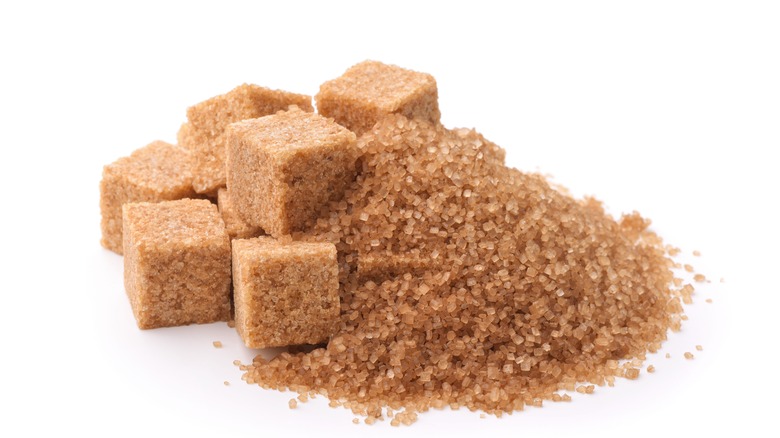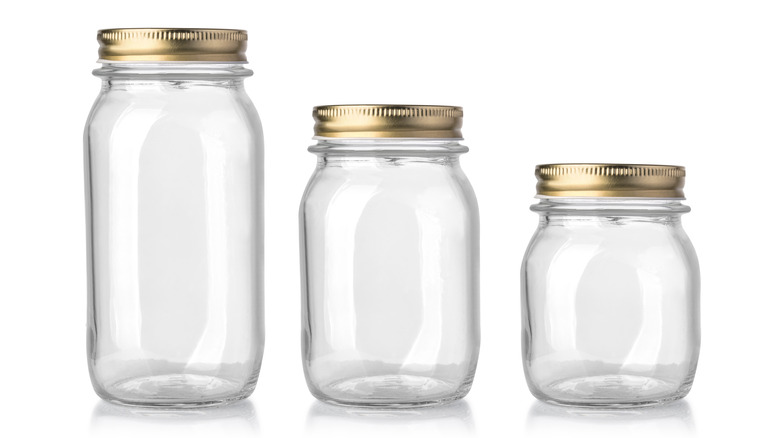You Should Never Store Brown Sugar In The Fridge. Here's Why
It is safe to store brown sugar in the refrigerator, right? — Wrong! In fact, you should never keep it in the fridge. Other than having an ant infestation, the last thing you want is for your brown sugar to become an unusable brick. To maintain its normal consistency, it needs to be stowed in cool, dry conditions — and a refrigerator can't provide that.
Per Home Cook World, cool and dry means a room temperature ranging from 68 degrees Fahrenheit to 77. Conversely, a refrigerator is set to run below 40 degrees, which is low enough to harden brown sugar. The appliance's internal humidity is also a problem. Constantly opening the door raises the moisture to an unsuitable level for brown sugar.
Fortunately, there are several solutions to revive dried-out, hardened, or clumped brown sugar. While a specialized sugar saver can be handy, Bob's Red Mill suggests employing a food processor to loosen the lumps. Start at a low setting, and make sure the sugar is not so hard it could potentially damage the blender. Above all, maintaining brown sugar in pristine condition requires proper storage.
Storing brown sugar effectively
Street Smart Kitchen states that dark brown sugar contains 6.5% molasses and the lighter varieties have about half that amount. Brown sugar hardens when its moisture-containing molasses evaporates and dries out, which is generally the result of poor storage. Brown sugar, therefore, is best kept in an airtight container, per Redpath. This keeps pests out, shields the contents from unwanted odors or tastes, and seals adequate moisture in — tupperware, canning jars, or canisters all work well.
For maximum freshness and the best texture, brown sugar should not be stored near heat sources and should be isolated from foods or condiments that are heavily aromatic. If desired, brown sugar can be kept in its original plastic bag and stored in an airtight Ziplock-type bag or vacuum-sealed container, according to In The Kitchen With Matt. You can occasionally sprinkle water in the bag, but not too much or risk dissolving the sugar.
How to restore brown sugar
Ovens and microwaves are great for restoring brown sugar. In a regular oven, soften it in an oven-safe pan at a moderate temperature. Monitor and use the sugar as soon as it's ready before it cools and re-hardens. Or, place clumped sugar in a bowl, cover it with a damp towel, and zap it in the microwave in short increments. A block of brown sugar can also be restored by letting it sit in a bowl covered with plastic wrap and dampened paper towels.
Taste of Home recommends the Amish hack of placing a slice of bread in the sugar, which will soften as it absorbs moisture from the bread. Make sure to remove it after a day or so before mold sets in. One or two large marshmallows will also moisturize brown sugar, while an alternative approach is adding an orange peel or two, or apple slices.
MasterClass recommends using terra cotta sugar savers to moisten hardened sugar. Submerging one in cold water for a half hour, then add it to the sugar's air-tight storage canister. The water absorbed by the earthenware provides the necessary moisture to keep the sugar soft. When re-watered and cleaned routinely, a terra cotta sugar saver can be effective for six months.


